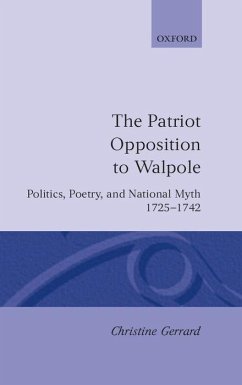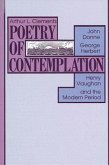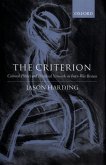Drawing on the literature, prints, architecture, and statuary of the 1730s, Christine Gerrard also discusses two of the decade's most powerful romantic patriotic myths - Gothic liberty, and Elizabethan greatness - and reveals that in its nationalistic emphasis upon Nordic and Celtic traditions, the figure of the ancient British Druid, and native 'bards', Patriot literature anticipates the 'Gothic' strain emerging in the poetry of Gray, Collins, and the Wartons only a few years later.
What did it mean to be a "Patriot" during the Walpole administration? This is the first full-length study of the so-called Patriot opposition to Walpole which reached its height during the clamor for war against Spain at the turn of the 1730s. Christine Gerrard examines the interrelationship between patriotism, politics, and poetry in the period 1724-1742, looking at the poetry and drama of such authors as James Thomson, Alexander Pope, and the young Samuel Johnson, who were all drawn to the heady idealism of the young Boy Patriots. Other authors discussed include Bolingbroke, Lyttleton, West, Mallet, and Hill, and Gerrard looks, too, at the literature, prints, architecture, and statuary of the 1730s.
What did it mean to be a "Patriot" during the Walpole administration? This is the first full-length study of the so-called Patriot opposition to Walpole which reached its height during the clamor for war against Spain at the turn of the 1730s. Christine Gerrard examines the interrelationship between patriotism, politics, and poetry in the period 1724-1742, looking at the poetry and drama of such authors as James Thomson, Alexander Pope, and the young Samuel Johnson, who were all drawn to the heady idealism of the young Boy Patriots. Other authors discussed include Bolingbroke, Lyttleton, West, Mallet, and Hill, and Gerrard looks, too, at the literature, prints, architecture, and statuary of the 1730s.








